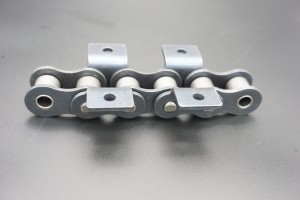The main failure modes of the chain are as follows:
1. Chain fatigue damage: The chain elements are subjected to variable stress. After a certain number of cycles, the chain plate is fatigued and fractured, and the rollers and sleeves are impacted by fatigue damage. For a properly lubricated closed drive, fatigue damage is the main factor determining the working capacity of the chain drive.
2. Chain hinge wear: It is one of the most common failure forms. Wear and tear lengthens the pitch of the outer links of the chain, increasing the unevenness of the pitch of the inner and outer links; at the same time, the total length of the chain is elongated, resulting in loose chain edges. All of these will increase the dynamic load, cause vibration, cause poor meshing, tooth skipping, and mutual collision of chain edges. Open transmission, harsh working conditions, poor lubrication, excessive hinge pressure, etc. will aggravate chain hinge wear and reduce service life.
3. Chain hinge gluing: When the lubrication is improper or the speed is too high, the friction surface of the pin shaft and the sleeve that make up the hinge pair is prone to gluing damage.
4. Multiple impact breaks: When repeated starting, braking, reversing or repeated impact loads, the rollers and sleeves will be impacted and broken.
5. The static strength of the chain is broken: when the low-speed and heavy-duty chain is overloaded, it is prone to break due to insufficient static strength.
Post time: Aug-30-2023

